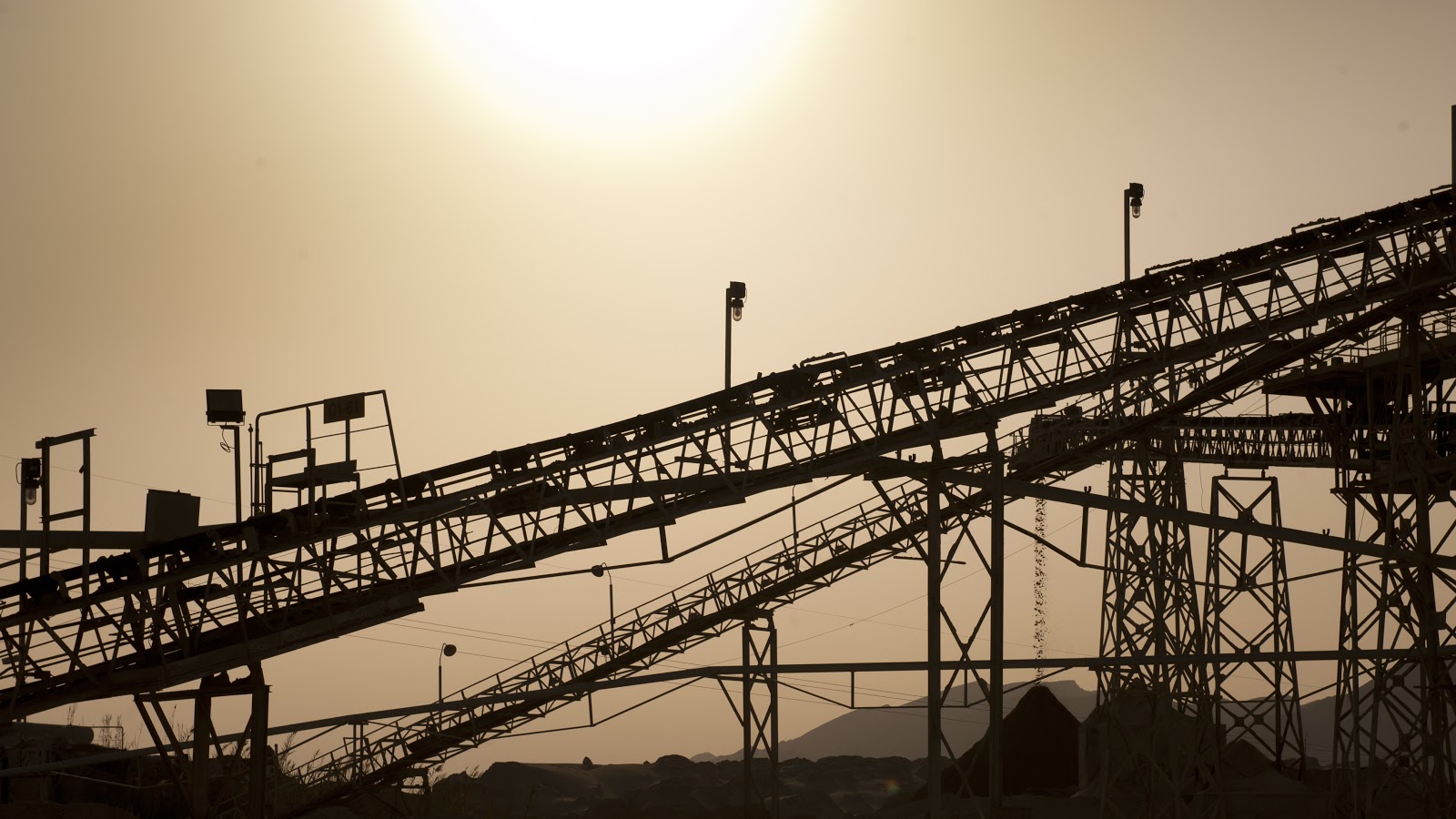Goals & Performance
We are committed to continual improvement of our performance, be it towards our customers, communities, commercial partners and employees. As we succeed in some areas, we face challenges in others. We strive to: be a top-tier company in safety performance and environmental responsibility, an employer of choice, leverage technology and industrial know-how to meet the needs of our customers and adopt best practices for corporate governance.
Environmental Responsibility
| | Goals | Achievements During 2018 | The Next Steps |
|---|---|---|---|
| GHG Emissions | 25% reduction of Global Scope. 1+2+3 GHG emissions by 2022, compared to the year 2008. | By 2018, ICL GHG emissions have been reduced by 21% compared with 2008 base year emissions, which constitutes 84% of the planned decrease by 2022. Specifically in 2018, emissions have increased by 5% compared to 2017, mostly due to NG consumed in the trial stages (January-July 18) of start-up for the new Sdom power plant. | Continue reductions, mainly through the first full year operation of the new Sdom power plant in 2019, and through the planned termination of Oil Shale combustion in ICL Rotem in 2021 and replacement with NG. |
| Air Emissions | 15% reduction of Global NOx emissions from point sources, by 2022 compared to the year 2016. 35% reduction of Global SOx emissions from point sources, by 2020 compared to the year 2016. 40% reduction of ICL Israel Ammonia (NH3) emissions from point sources, by 2020 compared to the year 2016. | NOx emissions were reduced by 20% in 2018. The reduction was mostly caused due to the installation of a new highly efficient boiler, in the new Sdom power plant; A transition of NG was completed in late 2018 in ICL Haifa F&C, which is due to create NOx emission reductions in 2019. SOx emissions were reduced by 25% in 2018, mostly to the installation of a new, advanced and improved catalyst in one of the ICL Rotem sulphuric acid production plants. NH3: No significant progress yet- expected in 2019. | 2019: Conduct full-year operation of the Highly Efficient boiler in the new Sdom power plant;Implement New NOx treatment technology in Nitrous Acid facility stack, Haifa F&C; 2019: Install Improved Catalysts in the second ICL Rotem sulphuric acid plant. 2019: Implement New NH3 treatment technology in Ammonium Nitrate facility stack, Haifa (F&C). 2021: Eliminate Oil Shale combustion in ICL Rotem, switching to NG. |
| Energy | Make natural gas (NG) the main fuel for ICL’s energy intensive sites. Achieve $8 million savings in energy costs in 2019 compared with 2018; Achieve a year-by-year improvement in over 50% of all product based intensity KPI's (MWh per tonne product). | 90% of the fuel consumed by ICL Global’s facilities in 2018 was derived of NG; In 2017-8 ICL Rotem Zin and ICL Haifa (F&C) transitioned from fuel oil to NG. By the end of 2018, 95% (40/42) of ICL Israel's main energy-consuming installations were converted to NG. 27 of ICL’s largest global production sites implemented the energy savings methodology (ACE); The specific savings in 2018 were approx. $10 million compared to 2017; In 2018, 45 of 70 products (64%) showed annual average improvement in energy intensity, therefore achieving the annual target. | During 2019-20, implement the ACE energy savings methodology in 4 further sites for the first time. ; Other sites will be revisited to refresh local ACE energy efficiency teams and procedures, and to identify new energy efficiency opportunities. 2021: Eliminate Oil Shale combustion in ICL Rotem, switching to NG. |
| Mine Reclamation | Achieve full reclamation of the remaining 2,500 hectares (out of 5,000) of historical mining areas at ICL Rotem by 2021. | 100 hectares have been restored including grading and approximately 600 hectares are in the process of being restored. | Incorporate ecological research in our mining zones; Implement best practices regarding biodiversity in the mines. |
| Environmental Incidents | Prevent Environmental Incidents and reduce their numbers by taking proactive measures. | Detailed Planning and implementation of a global ICL EHS management system. Continued efforts to build awareness towards environmental incidents prevention, hazard recognition, risk assessment and EHS training for all relevant personnel. | Global EHS management to monitor proactive KPIs: performance of EHS audits, compliance and training plans, incident and complaint investigations and implementation of conclusions, encourage hazard recognition and mitigation; Continue encouragement of rapid and comprehensive internal reporting; Effectively share lessons learned. |
Social Responsibility
| | Goals | Performance | The Next Steps |
|---|---|---|---|
| Health & Safety | Reactive KPIs: Reduce Both IR and SI global rates by 10% in 2019, compared with the previous year. These goals have been broken down to the different business units and the KPIs are tracked by each of them; Proactive KPIs for 2019 are: 100% planned EHS Audit Plan Completion; Hazard Recognition Index: >2 hazards per employee per year;100% planned Process Hazard Assessments (PHA);completion. 100% planned Job Safety Assessments (JSA) completion. The plan is to assess the 10 most risky roles per site; Legally mandated training:completing 100% on-time; Completing >90% of investigations for high and medium severity safety incidents within the internally defined designated 15 days post-incident; Completion of post-incident/audit CAR’s (Corrective Action Reports) actions: >90% in defined time frame, and 100% generally. | The IR rate was reduced by 12% in 2018 compared to 2017, due to decrease in company employees LWDC accidents. However, company employees absent days after such accidents have increased, resulting in a 12% increase in the SI rate. the grand majority of these absent days resulted from 5 specific un-severe leg-twisting and tripping incidents that have caused relatively long work absences; The total number of LWDC incidents has increased by 7% in 2018, due to an increase in contractor employee accidents. This increase was partially caused by large on-site CAPEX projects conducted in 2018 in ICL Dead Sea and ICL Iberia, involving extensive work by contractor employees (significantly more than in 2017). Proactive measures are taken to enhance safety and prevent accidents for both company and contractor employees; Unfortunately, one death of a contractor employee occurred during 2018. See Health & Safety for the details and actions taken following this incident. | Global EHS management to monitor proactive KPIs: performance of process safety and EHS audits, job safety analysis, compliance and training plans, incident investigations and implementation of conclusions, encourage hazard recognition and mitigation; Continue encouragement of rapid and comprehensive internal reporting; Effectively share lessons learned. |
| Management Standards | Implement ISO (or eqv.) standards for Environment, Safety and Quality for all of ICL’s production sites by 2020. Accredit all ICL’s significant energy consuming sites with ISO 50001 or an internal similar standard by 2020. | 91% of ICL production sites are already certified to ISO 14001 or an equivalent standard for environmental management; 89% of ICL production sites are already certified to OHSAS 18001/ISO 45001 or an equivalent standard for safety; 93% of ICL production sites are already certified to ISO 9001 or an equivalent standard for quality. 15 Production sites, which account together for about 75% of ICL’s global energy consumption, are already accredited to ISO 50001; and 5 more sites are due to be accredited by 2020. | Complete the implementation of Environment, Safety and Quality standards in all of ICL’s production operations. Incorporate ISO 50001/internal energy standard at all relevant sites. |
| Sustainable Procurement | To add 80 new suppliers to TFS sustainability assessment pool during 2019; To add 10 new suppliers to TFS sustainability audit pool during 2019. | Through the TFS initiative, ICL will engage approx. 450 main suppliers in 2019, requesting them to complete sustainability assessments and/or audits. The approached suppliers account for over $1 billion in spending, or approx. 28% of the total ICL in 2018. | The progress will be published in the next 2019 CSR report. |
| Diversity | By 2024 to achieve an increase of women in overall management to 30%; By 2024 to achieve an increase of women in senior management to 20%; By 2024 to achieve an increase of women participation in Global Management Development courses to 30%; By 2024 to achieve an increase of women in the overall workforce to 22%; | The percentage of women serving as executive officers in ICL’s global management increased from 11% in 2017 to 33% in 2018; ICL has Created an internal global forum to promote diversity; ICl has updated recruitment and promotion procedures to increase diversity. | Increase ICL’s exposure to potential talent from diversified groups. |
Sustainable Products & Services
| | Goals | Performance | The Next Steps |
|---|---|---|---|
| Products & Services | Increase sales of Polysulphate to about 1M tonnes by 2020. Increase the agricultural productivity and income of small-scale food producers. Create a science-based assessment tool for sustainable management of chemicals, specifically flame retardants. | ICL produced about 350 thousand tonnes of Polysulphate and developed additional Polysulphate-based products, such as Potashplus and PKplus. ICL has established the CFPN, a global center for research and knowledge in the field of fertilizers and plant nutrition, in conjunction with Israel’s Agricultural Research Organization. The center has 21 active projects in addition to field trials and agronomic workshops with students worldwide. ICL was one of the few companies that won the co-funding award of a USAID project for increasing agricultural productivity in Tanzania. The project was marked successful and is continuing for another year. ICL is involved and supports the goals of the International Potash Institute (IPI) for balanced fertilization. Through it, ICL operated 150 field experiments and research projects worldwide. a prominent example is the “Potash for Life” program in India. The goal of the program is to reach isolated and remote villages, and to spread the word about the benefits of potassium as fertilizer for agriculture. During 2018, the activity in India included 1,076 demos, 207 field days and multiple training sessions. ICL’s Systematic Assessment for Flame Retardants (SAFR®) assesses the sustainability profile of individual flame retardants in their intended use, based on hazard criteria and potential exposure resulting from their application. Assessments conducted on 100% of ICL’s flame retardants using SAFR®. | Develop additional Polysulphate-based products and expand into additional markets. Enable ICL’s agronomists to further promote a balanced approach for fertilizer use and management. Continue activities to promote the adoption of the methodology throughout the value chain where it will enable purchasing decisions based on the sustainable use of a flame retardant for specific applications. |
| Innovation & R&D | Focus on new products and technologies development, applications and formulations in ICL strategic areas. | ICL invested $52M in R&D in 2018. ICL Innovation, which focuses mainly on high-risk technologies in the initial stages of development, is currently running 22 projects, which are done in collaboration with partners from the academy and/or industry. ICL Innovation has successfully concluded a proof of concept project for reducing the use of biocides with the help of signaling molecules. The project has since gone through additional optimization in the TAMI/IMI ICL research center. ICL-Specialty Minerals has developed a safer and naturally based personal care product. CareMag™ D answers the Antiperspirant and Deodorant (APD) industry requirements for natural, non-toxic, hypoallergenic ingredients. | Increase our involvement in agricultural technology (Ag Tech). |







